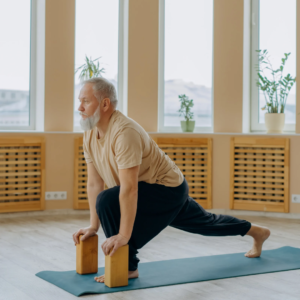Mobility issues, hip and lower back pain
As people age, mobility issues, hip pain and lower back pain become more common. For Boomers, born between 1946 and 1964, this is an all too common reality. Conditions like osteoarthritis and previous injuries could contribute to challenges with mobility, hip pain and lower back pain as well. Fortunately, there are steps that can be taken to help Boomers overcome these issues and maintain their independence. One possible treatment option is acupuncture.
Here are so me tips from the mind of an experienced Chinese medicine Doctor (our very own acupuncture and Chinese herbal medicine practitioner and long-time Yin Yoga Yogi, Chee) on how Boomers may overcome mobility issues, hip pain and lower back pain:
- Exercise – Regular exercise is one of the most important things Baby Boomers can do to maintain their mobility. Exercise helps to build strength, flexibility, and balance, all of which are key to staying mobile as we age. Encourage Baby Boomers to find an exercise routine that they enjoy and that suits their abilities. This could include activities like swimming, yoga, walking, or resistance training.

- Home Modifications – Making modifications to the home can also be helpful in improving mobility. This can include installing handrails on stairs, adding non-slip mats to the bathroom, and removing any tripping hazards like loose rugs. Baby Boomers may also benefit from using assistive devices like a cane or walker to help them get around.
- Physical Therapy – If a Baby Boomer is experiencing mobility issues due to an injury or medical condition, physical therapy may be helpful. A physical therapist can work with them to develop a personalized exercise plan and teach them exercises to improve their strength and mobility.
- Social Connections – Finally, social connections can play a role in maintaining mobility. Encourage Baby Boomers to stay connected with friends and family members and to participate in social activities. This can help keep them motivated to stay active and engaged in the world around them.
In addition to these 4 steps, acupuncture is something Baby Boomers might consider when experiencing mobility issues. Acupuncture may assist Baby Boomers reduce inflammation, increase blood flow, reduce pain, improve muscle function, and complement other treatments. At AAC, the typical acupuncture treatment includes an initial consultation, designed to learn about and understand the underlying motivations for seeking acupuncture. Once these matters are understood and a Chinese medicine diagnosis of their condition is reached, then treatment may begin. To consolidate and maximise treatment outcomes, a treatment plan, focused on resolving the patients’ health concerns in the most efficient and cost-effective way, would be presented for consideration and implementation. This plan would involve acupuncture and related therapies and would likely include recommendations around diet, exercise and other lifestyle factors that may influence the underlying condition. All recommendations are based on the theories and practices of Chinese medicine, which has its roots planted firmly in great antiquity and its branches reaching deep into the latest scientific research. Here at AAC we revere the lessons of our medical ancestors, while respecting and considering the efforts of contemporary research. After all, Chinese medicine supposed to be all about balance, isn’t it!
So, in conclusion, BabyBoomers experiencing mobility issues have many options to help maintain their independence and mobility. Encouraging exercise, making home modifications, considering physical therapy, providing transportation assistance, encouraging healthy eating habits, promoting social connections, and even using acupuncture are the types of strategies a Boomer might experience should they bring their concerns to us here at AAC.
We hope to see you in clinic soon to start your acupuncture and Chinese medicine journey towards greater health and mobility.

